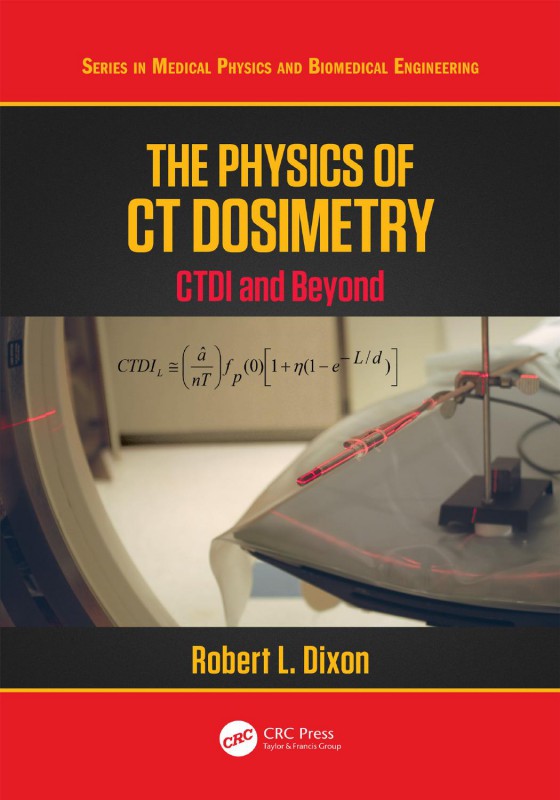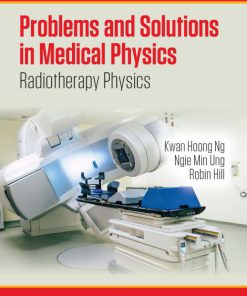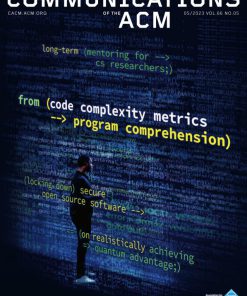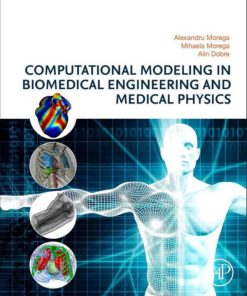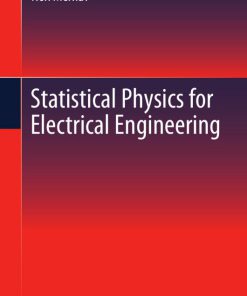(Ebook PDF) The Physics of CT Dosimetry CTDI and Beyond 1st edition by Robert Dixon 0429662777 9780429662775 full chapters
$50.00 Original price was: $50.00.$25.00Current price is: $25.00.
Authors:Dixon, Robert L , Series:Biomedical [71] , Author sort:Dixon, Robert L , Languages:Languages:eng , Published:Published:Mar 2019 , Publisher:CRC Press
The Physics of CT Dosimetry CTDI & Beyond 1st edition by Robert L. Dixon – Ebook PDF Instant Download/DeliveryISBN: 0429662777, 9780429662775
Full download The Physics of CT Dosimetry CTDI & Beyond 1st edition after payment.
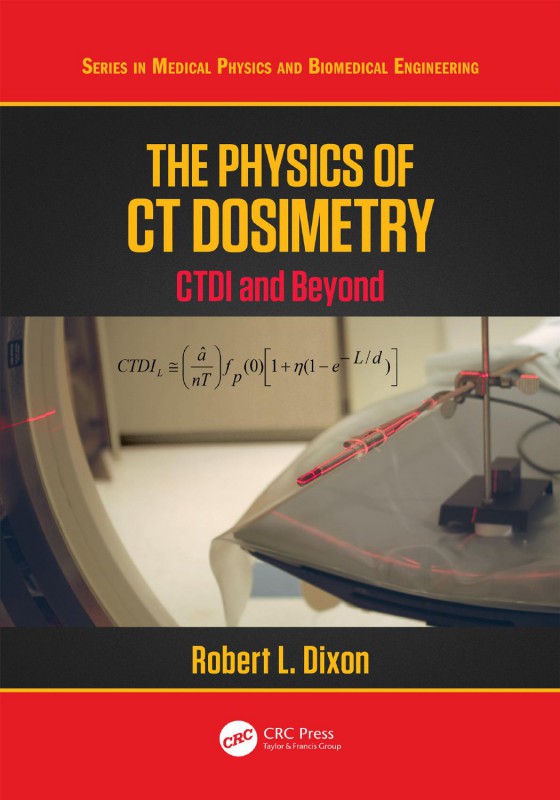
Product details:
ISBN-10 : 0429662777
ISBN-13 : 9780429662775
Author : Robert L. Dixon
This book explores the physics of CT dosimetry and provides practical guidance on best practice for medical researchers and practitioners. A rigorous description of the basic physics of CT dosimetry is presented and illustrates flaws of the current methodology. It also contains helpful (and rigorous) shortcuts to reduce the measurement workload for medical physicists. The mathematical rigor is accompanied by easily-understood physical explanations and numerous illustrative figures. Features: Authored by a recognised expert in the field and award-winning teacher Includes derivations for tube current modulation and variable pitch as well as stationary table techniques Explores abnormalities present in dose-tracking software based on CTDI and presents methods to correct them
The Physics of CT Dosimetry CTDI & Beyond 1st Table of contents:
Chapter 1 ■ Introduction and History
1.1 INTRODUCTION
1.2 A HISTORICAL VIEW OF CT DOSIMETRY
1.2.1 The Early Universe
1.2.2 The Birth of CTDI – 1981
1.2.3 Enter the Regulators – 1989
1.2.4 The Standard Dosimetry Phantoms
1.2.5 Enter CTDI100 – 1995
1.2.6 The Advent of Multi-Detector CT (MDCT) – 1998
1.2.7 Enter CTDIvol (A Misnomer) but an Improvement since It Eliminates nT (N × T)
1.2.8 Dose Length Product
1.2.9 Helical Scanning – Scanning with Continuous Table Motion – 1990
1.3 SLIPPING THE SURLY BONDS OF CTDI
1.3.1 An Alternative to the Pencil Chamber – 2003
1.3.2 AAPM TG-111 – 2010
1.3.3 Limitations of the CTDI-Paradigm and the Pencil Chamber Acquisition
1.4 The IEC Attempts to Circumvent the Limitations of CTDI
1.4.1 For Shift-Variant Techniques
1.4.2 For the Stationary Phantom/Table
1.4.3 Wide Beam Widths
1.4.4 Use of the Scanner-Reported CTDI
1.4.5 Size-Specific Dose Estimates (SSDE)
References
Chapter 2 ■ Derivation of Dose Equations for Shift-Invariant Techniques and the Physical Interpretation of the CTDI-Paradigm
2.1 Introduction
2.2 Derivation of the Dose Equations and the CTDI-Paradigm on the Phantom Central Axis for a Shift-Invariant Helical Technique in Which No Parameters Vary With z (Constant Tube Current, Pitch, Aperture, etc.)
2.3 Limitations of the CTDI-Paradigm: The Requirement for Shift-Invariance
2.4 Extension of the Derivations to Axial Scans and to Helical Scans on the Peripheral Axes
2.4.1 Derivation of the Dose Equations for Axial Scans
2.4.2 Derivation of the Helical Dose Distribution on the Peripheral Axes
2.4.3 Longitudinal Average vs. Angular Average for Helical Scans
2.5 Total Energy E Absorbed in the Phantom (and DLP)
2.5.1 CTDI-Aperture
2.5.2 The Physical Meaning of CTDIfree-in-air
2.5.3 Three-Dimensional Calculation of the Total Energy Deposited in the Phantom
Glossary
References
Chapter 3 ■ Experimental Validation of a Versatile System of CT Dosimetry Using a Conventional Small Ion Chamber
3.1 INTRODUCTION
3.2 SUMMARY OF CT DOSE THEORY IN A CYLINDRICAL PHANTOM
3.3 ACCUMULATED DOSE (OR CTDI) MEASUREMENTS
3.3.1 Pencil Chamber Acquisition Method
3.3.2 Small Ion Chamber Acquisition Method
3.3.3 The Measured Quantity – A Phantom Dose Surrogate
3.4 MATERIALS AND METHODS
3.5 MEASUREMENTS VALIDATING THE PRECISION AND ACCURACY OF THE DOSIMETRY SYSTEM ITSELF
3.5.1 Test of the “Stem Effect” for NE 2571 Farmer Chamber
3.5.2 Effect of Phantom Cavity on Farmer Chamber Reading
3.5.3 Cross Comparison of Ion Chambers
3.5.4 Validation of the Manufacturer-Supplied Pencil Chamber Active Length ℓ
3.6 BODY PHANTOM MEASUREMENTS AND RESULTS
3.6.1 Effect of Phantom Length on CTDI100
3.6.2 Experimental Plan for Demonstration of the Small Ion Chamber Acquisition Method
3.6.3 Selection of Scan Parameters for the Small Ion Chamber Acquisition
3.6.4 Results of Measurements Made in the 400 mm Long Body Phantom
3.7 ANALYSIS OF BODY PHANTOM DATA
3.7.1 Underestimation of Equilibrium Dose in the 400 mm Phantom Due to Truncation of Integration Length to 100 mm
3.7.2 Underestimation of Equilibrium Dose by CTDI100 – Total Shortfall
3.7.3 Farmer vs. Pencil Chamber Comparison
3.8 CTDI-APERTURE
3.8.1 A Useful Constant Deriving from Conservation of Energy and a Robust Measurement Shortcut
3.9 VALIDATION OF PERIPHERAL AXIS DATA
3.9.1 Correcting a Misconception
3.9.2 Testing the Sensitivity of the Peripheral Axis Data to Averaging Errors
3.9.3 Visualization of the Actual Measurement Field on the Peripheral Axis
3.9.4 An Alternate Method to Circumvent the Possibility of Peripheral Axis Averaging Errors
3.10 A SUGGESTED NEW CT DOSE MEASUREMENT PROTOCOL
3.11 THE CENTRAL AXIS DOSE GAINS IN RELATIVE IMPORTANCE
3.12 SUMMARY OF RESULTS
3.13 CONCLUSION
Appendix A: Illustration of CTDI-Aperture Constancy
Glossary
References
Chapter 4 ■ An Improved Analytical Primary Beam Model for CT Dose Simulation
4.1 INTRODUCTION
4.2 PRIMARY BEAM MODEL
4.2.1 The Simple Geometric Model
4.2.2 Detailed Primary Beam Model on the Axis of Rotation
4.2.3 Outline of Primary Beam Model Derivation
4.2.4 Convolution Approximation for the Tilted Anode
4.2.5 Integral Theorem
4.2.6 Model Application to the “Z-Flying Focal Spot”
4.3 EXPERIMENTAL VALIDATION OF THE PRIMARY BEAM MODEL ON THE AXIS OF ROTATION
4.3.1 Materials and Methods
4.3.2 Primary Beam Profiles: Measurement vs. Theory
4.3.3 Tilted vs. Flat Anode Challenge
4.4 SENSITIVITY PROFILE
4.5 SCATTER MODEL
4.5.1 Defining CTDI-Aperture
4.6 EXTENSION OF THE PRIMARY BEAM MODEL TO THE PERIPHERAL PHANTOM AXES
4.6.1 Primary Beam Model for the Peripheral Axes
4.6.2 Determination of the Angular Dependence of the Primary Beam Dose Rate A(θ)
4.7 MODEL PREDICTIONS FOR CUMULATIVE DOSE DISTRIBUTIONS
4.7.1 Transforming the Helical Dose Equation on a Peripheral Axis into an Axial Format
4.7.2 Basic Equations Describing the Accumulated Dose
4.7.3 Smoothing Conditions for the Quasi-Periodic Cumulative Dose
4.7.4 Simulation of the Accumulated Dose on the Peripheral Axes
4.7.5 Experimental vs. Simulated Accumulated Dose Distributions
4.8 CUMULATIVE DOSE (OR CTDI) MEASUREMENTS USING A SMALL ION CHAMBER
4.9 SUMMARY AND CONCLUSIONS
ACKNOWLEDGMENTS
APPENDIX A: DETAILS OF PRIMARY BEAM MODEL ON THE AXIS OF ROTATION
A.1 The “Inverse Square” Correction Term
A.2 Heel Effect Term
A.3 Uniformity of Phantom Attenuation Across the Slice
A.4 Approximation of the Constraint Equation
A.5 Solving the Tilted Anode Problem for fp(z)
Appendix B: Peripheral Phantom Axes
B.1 Heel Effect – Peripheral Axis
B.2 Constraint Equation for a Peripheral Axis
Glossary of Model Parameters and Their Magnitudes
References
Chapter 5 ■ Cone beam CT Dosimetry
5.1 INTRODUCTION
5.2 THEORY
5.2.1 Conventional CT Scanning Using Table/Phantom Translation: Accumulated Dose Equations for Helical or Axial Scan Trajectories Utilizing Table/Phantom Translation Along z
5.2.2 Helical Scanning
5.2.2.1 Transition from Helical to Stationary Table/Phantom
5.2.2.2 The Following Important Points Are Clear From the Foregoing:
5.2.2.3 In Summary
5.2.3 The Case of the Stationary Phantom
5.2.3.1 Relating the Dose and the Dose Distribution in SCBCT to That of Conventional CT
5.2.3.2 Measurement of the Central Ray Dose f(0) for a Wide Cone Beam and a Stationary Phantom in SCBCT
5.2.4 The Equilibrium Dose Constant Aeq
5.3 NUMERICAL ANALYSIS OF EXPERIMENTAL SCBCT DOSE DATA
5.3.1 The Inapplicability of the CTDI-Paradigm and the Pencil Chamber to Stationary Phantom Dosimetry
5.3.2 The Approach to Scatter Equilibrium for SCBCT
5.3.3 The Approach to Equilibrium Function H(λ)
5.4 MODELING THE CONE BEAM
5.4.1 General Considerations
5.4.2 The Heel Effect
5.4.3 A Simple Beam Model Predicting the Observed Dose Data
5.4.3.1 The Integral Theorem
5.4.3.2 Relation Between Aeq and the Total Energy Deposited in the Phantom (Integral Dose)
5.4.3.3 Calculation of the Relevant Stationary Phantom Peak Dose f(0) Using this Model
5.4.3.4 The Scatter LSFs Exhibit Surprising Simplicity – the Monte Carlo Model
5.4.3.5 Derivation of the Equation for the Peak Dose f(0) Using the Scatter LSF
5.4.3.6 The Approach-to-Equilibrium Function H(a)
5.4.3.7 The Commonality of the Approach to Equilibrium Function H(a) for Both Stationary Phantom Scanning (e.g., SCBCT) and Conventional Helical or Axial CT Scanning
5.4.3.8 Comparison of the Theoretical Equation for H(a) with Experiment
5.4.4 Extension to Peripheral Axes
5.4.4.1 Derivation of the Expression for f(z) and f(0) on the Peripheral Axis using the LSF
5.5 GENERATING THE COMPLETE DATA SET FOR CONVENTIONAL AND STATIONARY PHANTOM CT FROM A SINGLE MEASUREMENT OF THE PEAK DOSE f(0) RESULTING FROM A SINGLE AXIAL ROTATION – AN EXAMPLE
5.5.1 Crossover to Conventional CT dose
5.6 SUMMARY AND CONCLUSIONS
ACKNOWLEDGMENT
APPENDIX A: DERIVATION OF THE LSF FORMULATION FOR THE PERIPHERAL AXIS
Glossary
References
Chapter 6 ■ Analytical Equations for CT Dose Profiles Derived Using a Scatter Kernel of Monte Carlo Parentage Having Broad Applicability to CT Dosimetry Problems 6.1 INTRODUCTION
6.1.1 Summary of Pertinent Results from the Previous Chapter
6.1.2 Deriving an Analytical Function Describing the Complete Dose Profile
6.1.3 The Utility of the Analytical Dose Profile Function f(z)
6.2 MATERIALS AND METHODS
6.3 THEORY
6.3.1 The Primary Beam Component of the Axial Dose Profile f p(z)
6.3.2 Derivation of the Scatter Component of the Axial Profile from the Scatter LSF
6.3.3 Calculation of the Complete Axial Dose Profile on the Phantom Central Axis
6.4 COMPARISON OF THEORY WITH EXPERIMENTAL DATA
6.4.1 Primary Beam Function as Measured Free-In-Air
6.4.2 Dose Profiles f(z) Measured on the Central Axis of the 32 cm PMMA Body Phantom Including Scatter
6.4.3 The Heel Effect and Wide Cone Beams
6.4.4 Stationary Phantom CT
6.4.5 Helical CT with Wide Cone Beams and with Table Translation – CTDI L Can Again Apply
6.5 DERIVING ANALYTICAL EQUATIONS FOR CTDI L AND RELATED QUANTITIES FOR CONVENTIONAL CT USING THE DOSE PROFILE FUNCTIONS PREVIOUSLY DERIVED (L > â)
6.5.1 Providing New Insight into the Physics of CT Dosimetry
6.5.1.1 The CTDI Equation – Looking Behind its Integral Facade
6.5.2 The Effect of the Weak Coupling Between Scan Length L and Beam Width â for Conventional CT Using Table Translation
6.5.3 Application to Problems Beyond the Reach of the CTDI Method
6.5.3.1 Understanding and Exploiting the Symmetries Implied by the Convolution
6.5.3.2 The Case of a Near-Stationary Phantom for which L < â
6.5.3.3 Evaluation of the Accumulated Dose D L(z) for an Arbitrary Value of z ≠ 0
6.6 THEORETICAL DOSE DISTRIBUTIONS ON THE PERIPHERAL AXES FOR SINGLE AND MULTIPLE ROTATIONS
6.6.1 An Analytical CT Dose Simulator – SIMDOSE
6.6.2 Comparison of Theory with the Peripheral Axis Dose Profiles of Mori
6.7 APPLICATION TO SHIFT-VARIANT SCAN PROTOCOLS
6.8 SUMMARY AND CONCLUSIONS
ACKNOWLEDGMENTS
Appendix A: Heel Effect Function
Appendix B: Scatter Function Using the Full Double-Exponential LSF [Eq. (6.7 a)]Glossary
References
Chapter 7 ■ Dose Equations for Tube Current Modulation in CT Scanning and the Interpretation of the Associated CTDIvol
7.1 INTRODUCTION
7.2 Methods
7.2.1 Review of the Physical Meaning of the Traditional CTDIvol Based on Constant Tube Current (Constant mA)
7.2.2 A Brief Review of the Relation of CTDIvol to Patient Dose
7.3 Derivation of The Theoretical equations for Automatic tube current modulation (TCM)
7.3.1Shift-Invariant Helical Technique Using Constant mA
7.3.2 Deriving the Dose Equations for a Shift-Variant TCM Technique
7.4 Total Energy absorbed for automatic Tube current modulation (TCM)
7.5 THE TROUBLE WITH THE REPORTED VALUES OF CTDIVOL
7.5.1 Defining CTDI vol TCM for a Shift-Variant, Auto TCM Protocol
7.5.2 Tube Current Modulation (TCM) Versus Constant Current Summary
7.5.2.1 A Pencil Chamber Measurement Has No Utility Whatsoever for Auto TCM nor for Shift-Variant Techniques in General
7.6 A general method for handling shift-variant protocols
7.6.1 Simulation for a Shift-Invariant Constant mA
7.6.2 Simulation of Shift-Variant Protocols (such as z-axis TCM) for which the Formulae of the CTDI-Paradigm Eqs (7.1–7.3) are Not Valid
7.6.3 Calculation of Average Doses for the Profiles in Figure 7.6 – the Search for Some Commonality of CTDIvol TCM and CODI vol and CΤDIvol for Constant mA
7.7 Derivation of some new analytical equations treating energy and accumulated dose
7.7.1 Restricting the Derivation to the Central Axis and Assuming a Constant Tube Current (mA)
7.7.2 Foiled by CTDI100
7.7.3 The IEC Version of a “local CTDIvol(z)” and Global CTDI vol TCM for Tube Current Modulation (TCM)
7.8 Summary and Conclusions
7.8.1 The Total Energy Absorbed E (Integral Dose) and DLP are Robust between Auto TCM and Constant mA Protocols (but Only for the Same Scan Length L = υt0)
7.8.2 The Scanner-Reported Value of “CTDIvol” Is Not Robust in the Dose Domain
APPENDIX A
Glossary
References
Chapter 8 ■ Dose Equations for Shift-Variant CT Acquisition Modes Using Variable Pitch, Tube Current, and Aperture, and the Meaning of their Associated CTDIvol
8.1 INTRODUCTION
8.2 MATERIALS AND METHODS
8.3 DERIVATIONS
8.3.1 Accumulated Dose for a Shift-Invariant Scan (Constant Tube Current and Pitch)
8.3.2 Accumulated Dose Equation for Tube Current Modulation TCM [Variable i(z), Constant Pitch]8.3.3 Accumulated Dose Equation for Variable Pitch (Pitch Modulation or PM) at Constant Current
8.3.3.1 Table Kinematics for Variable Pitch
8.3.3.2 Using a Helical Shuttle as a Specific Example for Illustration of Table Kinematics
8.3.3.3 Summary for TCM and PM
8.3.4 Accumulated Dose for Concurrent Tube Current and Pitch Modulation (Concurrent TCM and PM)
8.4 Summary of Equations for various scan protocols
8.5 TOTAL ENERGY E ABSORBED IN THE PHANTOM (AND DLP)
8.6 Variable z-collimator aperture
8.7 DOSE SIMULATIONS
8.7.1Shift-Invariant Manual Technique – Constant Tube Current and Pitch
8.7.2 Variable Tube Current or Variable Pitch
8.7.3 Helical Shuttle (Variable Pitch, Constant Tube Current)
8.7.3.1 Short Helical Shuttle
8.7.3.2 Helical Shuttle vs. Cone Beam
8.7.4 Summary of Accumulated Dose Distributions for All Simulated CT Protocols in a Single Figure
8.8 Summary and conclusions
8.8.1 The Trouble with Scanner-Reported Values of CTDIvol for Shift-Variant Scan Techniques
APPENDIX A
Glossary
References
Chapter 9 ■ Stationary Table CT Dosimetry and Anomalous Scanner-Reported Values of CTDIvol
9.1 INTRODUCTION
9.2 THE STATIONARY PHANTOM PROBLEM – AND ITS SOLUTION
9.2.1 Analysis Using a Simulation
9.2.2 The Scanner-Reported CTDIvol
9.2.3 Clinical Examples of Anomalous Values of CTDIvol
9.2.4 Total Energy Absorbed E and DLP
9.3 APPROPRIATE STATIONARY PHANTOM DOSE EQUATIONS – THE FIX IS EASY
9.4 RELATION OF SCANNER-REPORTED DOSE INDICES TO ACTUAL PATIENT DOSE
9.4.1 Size-Specific Dose Estimates (SSDE)
9.4.2 Anomalous Values of SSDE
9.5 CTDI100 FOR WIDE BEAMS (IEC VERSION) – CRACKING THE “CTDI ENIGMA” CODE
9.6 SUMMARY AND CONCLUSIONS
References
Chapter 10 ■ Future Directions of CT Dosimetry and A Book Summary
10.1 BEYOND CTDI
10.1.1 Estimation of Organ Doses
10.1.1.1 Tube Current Modulation (TCM) and SSDE
10.1.2 Understanding Risks from CT Exams
10.1.2.1 The Gambler’s Fallacy
10.1.2.2 Death by Coefficient
10.2 BOOK SUMMARY
People also search for The Physics of CT Dosimetry CTDI & Beyond 1st:
the physics of radiology
physics and dosimetry
the physics of ct
physics of ct
dosimetry physics

